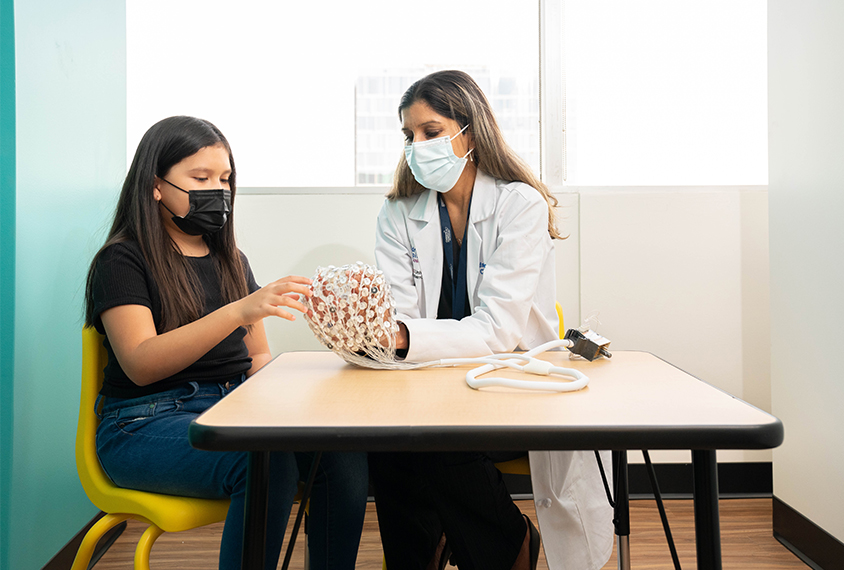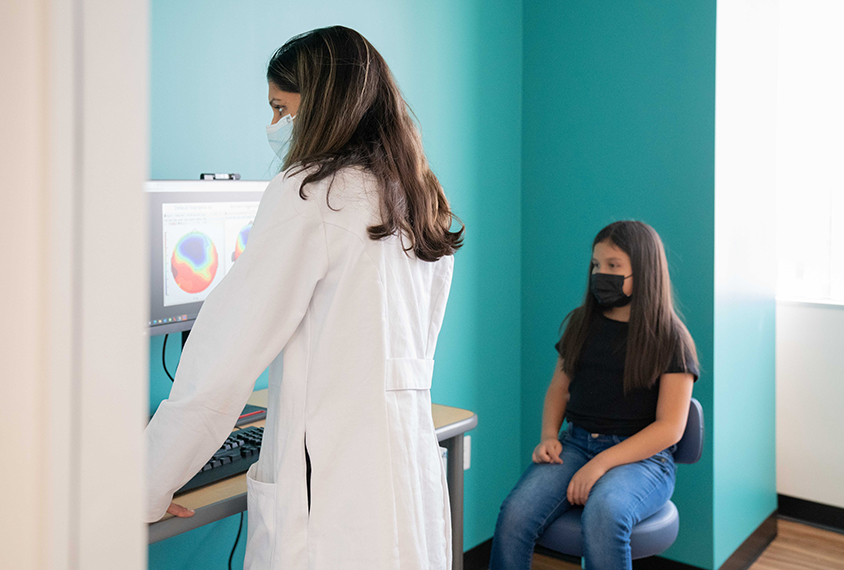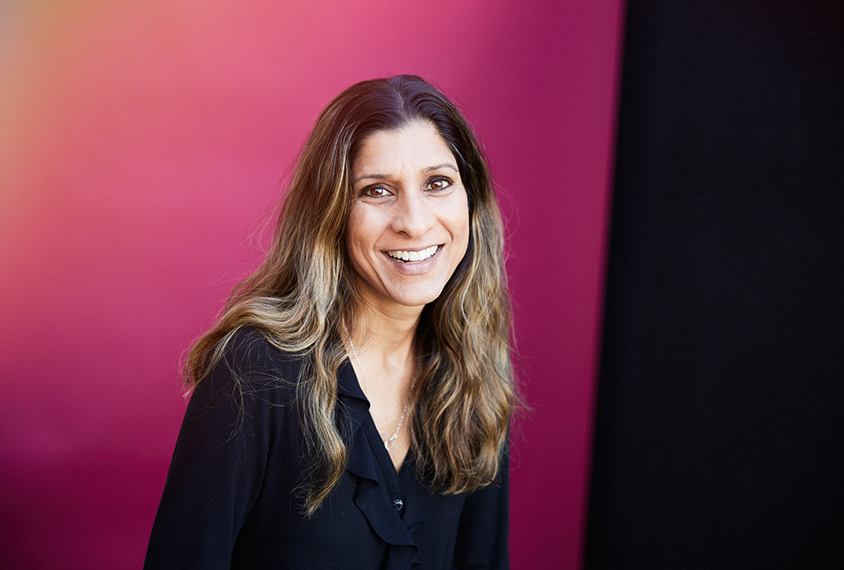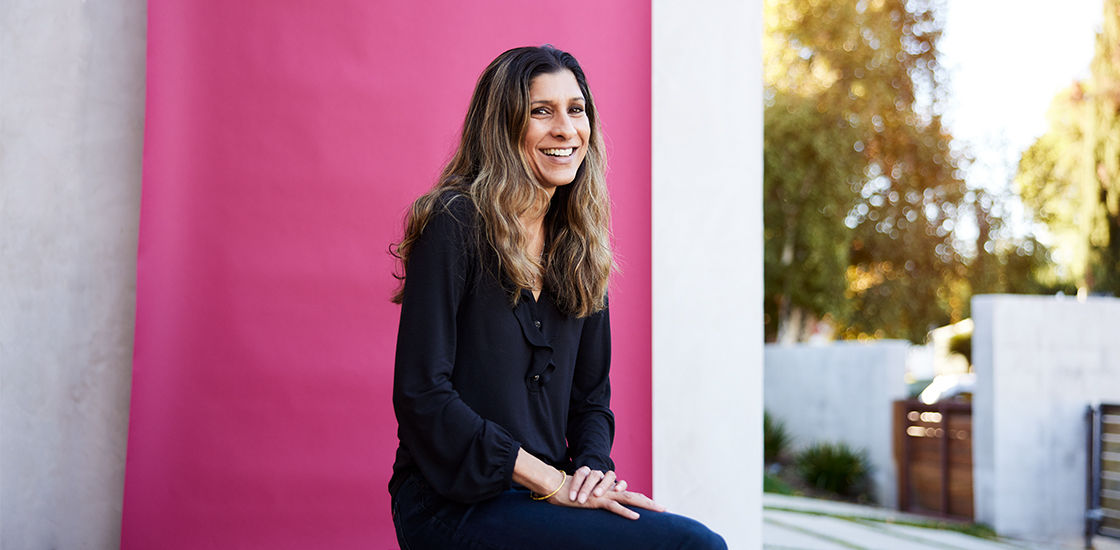Back in 2007, Shafali Jeste met with the mother of a boy she had seen when she was a pediatric neurologist at Boston Children’s Hospital in Massachusetts. The boy had autism, along with atypical facial features and severe learning and movement problems.
Testing had revealed a rare genetic variant, Jeste explained to the woman, but she could not say whether it was related to the boy’s problems, as its biological significance was not yet known. The woman was indignant. “This feels totally academic,” Jeste recalls her saying. “How is this going to help my kid?”
It was a deeply uncomfortable exchange for Jeste, 46, who is now chief of neurology at Children’s Hospital Los Angeles in California. “I felt incredibly deficient as a clinician,” she says.
Jeste had always wanted to be a doctor, to help people. But what she understood in that moment was that in many cases, science didn’t yet have answers. “I want to improve the lives of my patients. But what I realized is, to do so I have to be engaged in discovery,” she says.
So for the past 14 years, Jeste has spent about 80 percent of her time on research. Among her ongoing projects are studies of infants with tuberous sclerosis complex and dup15q syndrome, genetic conditions associated with autism that also typically involve significant movement and learning delays. She looks for biological markers of autism in these children and then uses those markers to evaluate proposed treatments. Jeste sees the approach paying off. “We’re finally at this place where we have potentially transformative therapies,” she says.
Jeste’s many accolades include the 2019 Presidential Early Career Award for Scientists and Engineers. She also takes time to mentor younger scientists and has served on the advisory boards of family support groups for people with inherited neurologic conditions. “She’s not early career anymore, but she still says yes to everything,” says Alycia Halladay, chief science officer at the Autism Science Foundation, who works closely with Jeste on an international research network called the Baby Siblings Research Consortium. “She comes from that place of yes.”
Big questions:
Jeste remembers dressing up in her mother’s hospital garb at age 5 or 6, and borrowing her stethoscope for Halloween. Her father, Dilip Jeste, is a renowned geriatric psychiatrist whose most recent book, “Wiser,” is about the multilayered traits that contribute to wisdom. Her mother, Sonali Jeste, is a practicing child and adolescent psychiatrist. “I grew up with these two models of really passionate and successful physicians,” she says. “And so I knew from an early age I wanted to be a doctor.”

Her parents met and married in India. In 1974, they came to New York, and three years later they moved to Maryland when Jeste’s father got a job at the National Institute of Mental Health. She was 2 at the time. When she was 8, her sister Neelum was born, and when she was 11 her father took a job at the University of California, San Diego, and the family moved to sunny La Jolla. “I grew up in paradise, and I loved it,” she says.
As a child, Jeste was an avid reader. She used to look forward to the arrival of the newest volume of the Encyclopedia Britannica. An extrovert, she bubbled over with questions and commentary, a tendency that led her sometimes to be reprimanded for talking in class. In high school, Jeste was a top student and captain of the tennis team. As the child of successful immigrants, she saw the payoff for ambition and hard work, but she was also aware of the opportunities she had been given that her parents hadn’t, and she judged herself harshly at times for anything less than top performance.
Jeste left Southern California for Yale University, where she majored in philosophy, fulfilling her pre-med requirements “on the side.” She studied existentialism, diving into Kierkegaard and Dostoevsky. “All these big questions that I grappled with for myself, I wanted to understand how other thinkers grappled with them,” she says.
Jeste spent the year after college working in Pune, India, where she lived with her maternal grandmother and made use of her first language, Marathi, teaching health care providers in a large public hospital about HIV. She also volunteered at an orphanage.
Biological approach:
On her return from India, she moved to Boston to attend Harvard Medical School. Jeste knew she wanted to work with children, and she was also determined to pursue her long-standing interest in the mind. She ultimately landed on neurology as a specialty, because despite her forays in philosophy, she liked the concreteness of brain biology.
It’s unusual for neurologists to focus on autism, Jeste says, because it’s a condition that can’t be localized to a specific brain region. Her neurology training has led her to take a biological approach, focusing on genetic causes. But whereas the syndromes she studies are rare, Jeste and her colleagues found in a 2016 study that the autism traits associated with them are indistinguishable from those of other, more common, forms of autism — which suggests that Jeste’s approach could unlock some of the fundamental mysteries of the condition.
“She seems very capable of thinking out of the box, so she can approach problems with a level of creativity you don’t see in all scientists,” says cognitive neuroscientist Charles Nelson of Harvard Medical School and Boston Children’s Hospital.
After graduating from medical school in 2002, Jeste began her residency at Boston Children’s Hospital, where she first encountered children with tuberous sclerosis. This condition is often diagnosed before birth because its characteristic tumors show up on prenatal ultrasounds. Doctors knew that half these children will meet the criteria for autism by age 3, but they couldn’t predict which newborns would get the diagnosis. So in addition to her 80-hour weeks at the hospital, Jeste started working with Nelson on a project to identify physiological signs of nascent autism.
Nelson says that Jeste impressed him not just with her tremendous work ethic but with the way she could toggle intellectually between a medical mindset and a scientific one. “She immediately rejected the traditional neurological perspective on EEG, which is, you’re looking for seizure activity, and instead embraced EEG as a tool of the cognitive neuroscientist. I think that was also exceptional,” he recalls.

The collaboration has lasted many years, and followed Jeste back to Southern California in 2010 to start a research program at the University of California, Los Angeles (UCLA), focused on identifying these biomarkers in babies with an elevated likelihood of autism. It has led to multiple discoveries. In a 2014 study, Jeste, Nelson and their colleagues found early behavioral markers of autism in infants with tuberous sclerosis. A brain biomarker showed up later: At age 2, autistic children with tuberous sclerosis have less synchronized brain waves in the alpha band than non-autistic children do, Jeste, Nelson and their colleagues reported in 2019.
At UCLA, Jeste earned a reputation for being upbeat, high energy and almost preternaturally productive, her colleagues say. With her former husband, Jeste co-founded ACEing Autism, a national nonprofit that provides tennis instruction to autistic children, which he still heads. (Their sons, Nischal, 14, and Kiran, 12, are nationally ranked tennis players.) Jeste has run the Boston and Los Angeles marathons and about 10 half-marathons, including one this month, and is a Peloton evangelist who regularly starts work by 5 a.m. “She’s incredibly competitive. I mean, like, intensely competitive,” Nelson says. “But for someone who’s so competitive, she’s also incredibly generous.” Referring to Jeste’s devotion to tennis, he adds, “There’s a level of competition you learn in sports that you extend to your work life, and she certainly has that. She aspires to great things, but it’s not at the expense of other people.”
UCLA child neurologist and clinician scientist Rujuta Wilson recalls in 2015 asking Jeste for input on a talk she was preparing. The two had just met, and yet Jeste spent hours going through Wilson’s data and making suggestions. “The next thing you know, it’s like 8 p.m. at night and it was as if the time had flown,” Wilson says. That experience led Wilson to apply for a fellowship at UCLA so they could continue collaborating.
Jeste was known at UCLA for throwing the best lab parties, Wilson says, featuring ping pong tournaments and ‘white elephant’ exchanges. “One of the nice things about working with people like Shafali is you work hard, but you can have fun while you’re doing it,” says James McPartland, professor of child psychiatry and psychology at Yale University, who is a collaborator and friend of Jeste.

Leaving an imprint:
Brain and behavioral markers such as those Jeste and her team have found can serve as benchmarks to help researchers evaluate proposed new therapies, Nelson says. Fluctuations in a biomarker can be an early indicator, he says, that the treatment is having an effect. For example, in a 2016 study, Jeste and her colleagues found altered electroencephalographic (EEG) patterns in children with dup15q syndrome. She is making plans with a pharmaceutical company to conduct a clinical trial of a drug for dup15q syndrome, in which researchers will measure shifts in EEG signature to determine whether the new medicine is working.
In a similar vein, Jeste and her UCLA colleague Connie Kasari are running a clinical trial for children aged 1 to 3 with tuberous sclerosis, to test whether a parent-led, play-based technique called JASPER could improve outcomes in those showing signs of autism. The trial will use the brain-wave biomarkers that Jeste, Nelson and their colleagues previously identified to evaluate whether the therapy is altering brain function.
One participant in the trial is 3-year-old Hannah Mason, whose then-foster mother, Trista Mason of Olympia, Washington, took several trips to Los Angeles for JASPER training. Although Jeste was not Hannah’s doctor, she “made a point of meeting us and talking with us,” Mason says. “‘How’s it going? Is there anything I can do for you?’” Mason recalls Jeste asking, adding that, unlike most of Hannah’s actual doctors, Jeste played with Hannah. “I have had doctors that don’t really look at her. They’re looking at their computer and their scans and her test results,” Mason says. Jeste’s assessment, Mason says, helped her and her husband decide to adopt Hannah.
Jeste has been known to bring an entire research team to a hotel where the families of children with neurogenetic syndromes are holding their annual meeting, setting up instruments in multiple rooms to offer motor, brain and behavioral assessments, free of charge. Jeste’s relationship with these families is mutually beneficial, McPartland says, because by coordinating her research with these groups, “she’s able to learn things about conditions that occur very infrequently in the general population.”
In July, Jeste moved to Children’s Hospital Los Angeles to head the neurology department, a job that will shift her energies more toward providing care, though her research will continue. Jeste plans to expand programs for autism, global delay and intellectual disability at the hospital, which has a mandate to treat everyone regardless of their ability to pay. Autistic children from low-income, marginalized communities often lack even a proper diagnosis, Jeste says, let alone medical services. She hopes to address some of those inequities and bring a more diverse group of children into clinical trials.
Jeste’s deepest professional aspiration dates back to her philosophy studies: to lead a meaningful life. “I want to feel like there was an imprint left from what I did,” she says, “and I don’t mean in terms of my own reputation or fame, but in terms of the impact I hopefully will have on others.”
For all her drive and ambition, Jeste did not anticipate how fast she’d progress in her career. “I was not expecting to be chief of neurology at age 46,” she says. “I thought maybe if I did that, it would be in 10 years.” But those around her are not surprised. “I really do think that she’s just kind of getting warmed up,” McPartland says.







